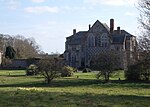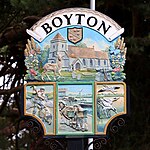Neutral Farm Pit, Butley
Geological Conservation Review sitesSites of Special Scientific Interest in Suffolk

Neutral Farm Pit, Butley is a 1.1-hectare (2.7-acre) geological Site of Special Scientific Interest in Butley, east of Woodbridge in Suffolk. It is a Geological Conservation Review site, and is in the Suffolk Coast and Heaths Area of Outstanding Natural Beauty.This is described by Natural England as a classic site in the study of the Early Pleistocene in East Anglia. It was used by the nineteenth-century geologist Frederick W. Harmer to define his Butley division of the Red Crag Formation, and it has many fossils of marine molluscs.There is access to the site from Mill Lane.
Excerpt from the Wikipedia article Neutral Farm Pit, Butley (License: CC BY-SA 3.0, Authors, Images).Neutral Farm Pit, Butley
Mill Lane, East Suffolk
Geographical coordinates (GPS) Address Nearby Places Show on map
Geographical coordinates (GPS)
| Latitude | Longitude |
|---|---|
| N 52.106 ° | E 1.461 ° |
Address
Mill Lane
Mill Lane
IP12 3PB East Suffolk
England, United Kingdom
Open on Google Maps











